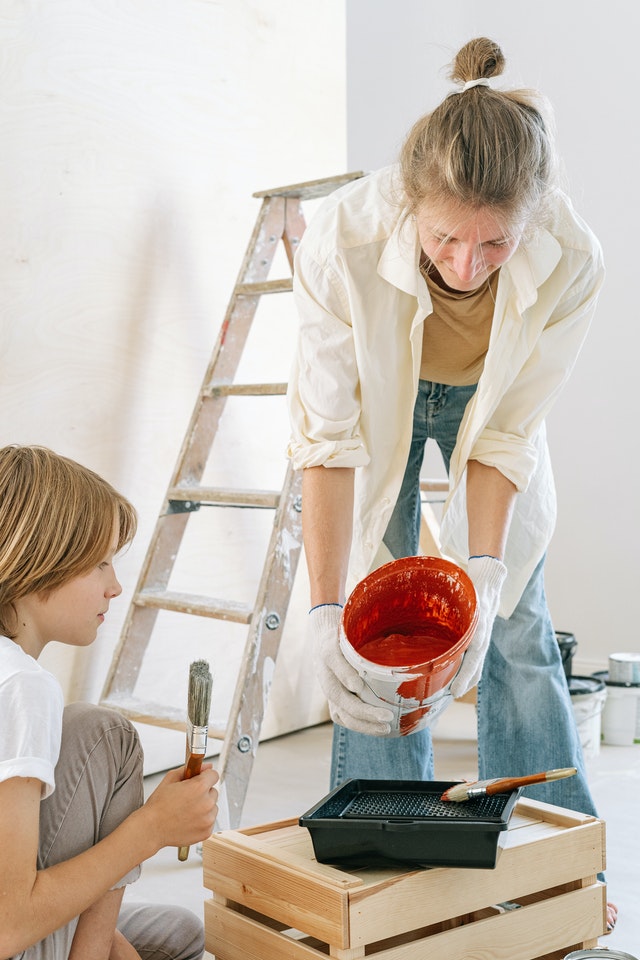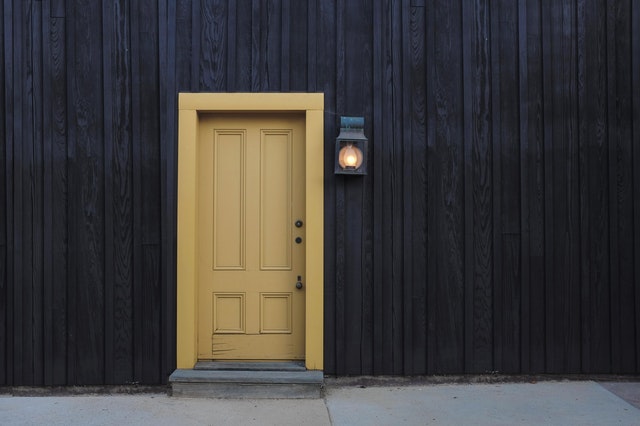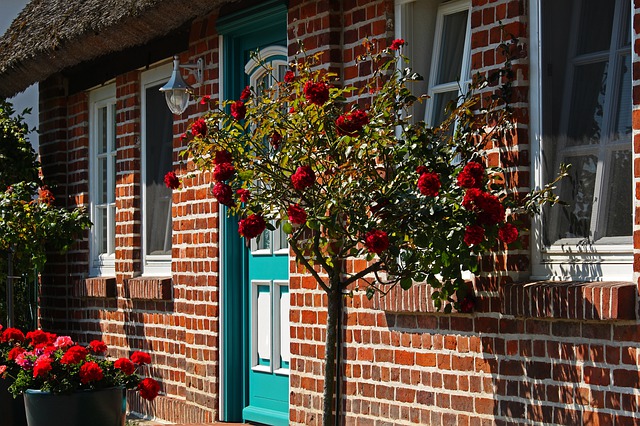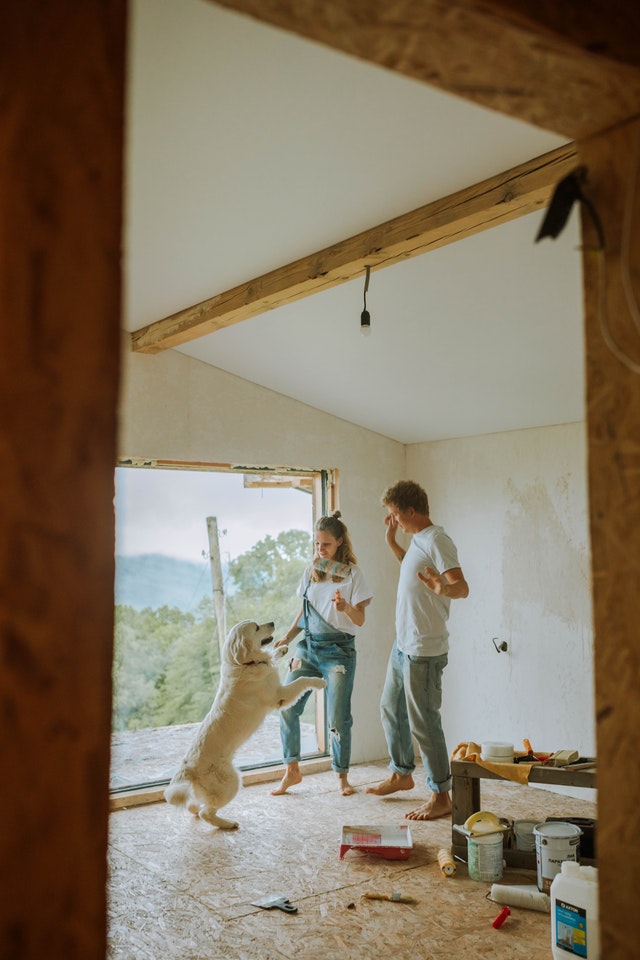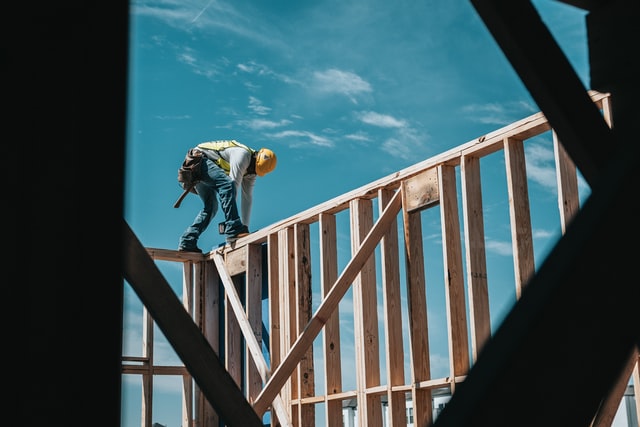
Types of houses
This is an excerpt from the Book called “Painting Houses & Gardens In Watercolor” by Richard Taylor. Continue reading to learn more about Types of houses, thanks to the author.
City Dwellings
Traditionally, the type of living spaces found in large cities are likely to be tall, forcing you to look upward towards the critical area where the building ends and the sky can be seen. If the shapes of the rooftops or decorative gables that visually punctuate the top of the walls are complex and compelling to look at you will find that they dominate the composition.
Skies in this type of picture are best limited to a single tone. Too much tone or complexity in this area, scudding or storm-laden clouds or vibrant contrasts, are not suitable as they draw attention away from the rest of the building, concentrating all of the viewer’s attention in no more than probably one-fifth of the picture frame.
Looking Upward
As you will usually be looking upward to paint these buildings, you will notice that you are seeing the underneath of eaves and decorative plaster architraves, and these will require some careful attention to ensure that the lines and details are correct.
It is always a good idea to make a sketchbook study or two of these architectural features to become familiar with their structure before you embark on the main painting.

Finally, it is worth keeping a close watch on your parallel lines. As you sit down to sketch and look upward at a tall building, just as a camera lens does, you may well see an apparent convergence of parallel vertical lines. Try to avoid this or it will make your picture look as if it has been copied directly from a cheap snapshoot. This will also add a little more visual “weight” to your painting with parallel lines leading to a decorative punctuated skyline.
Dutch Gabled House
11 ½ × 6½ in (29 × 17 cm)
The way that the rooftops of this Dutch house were hidden by the gable ends made the building particularly attractive to paint. The decorative plasterwork around the gable and the windows was painted using a hint of Ultramarine Violet and a little Cobalt Blue.
This study explores the way in which the decorative plasterwork of one particular style of gable “encases” the brickwork. Look for the way in which the decorative raised sections cast shadows and run a line of watery dark paint along the inside section.
High-Gabled Apartment
8 × 5 in (20 × 12 cm)
The decorative style of this dwelling made the unusual roof a particularly dominant part of the composition. The area directly underneath the eaves was visually important. The strong shadows were painted with a mixture of Burnt Umber and French Ultramarine to make the roof shape really stand out from the walls.
Multistory Living
The demand for living accommodations in crowded cities has, over the past few centuries, led to rise in multistory living, with new apartment buildings being constructed in urban areas all around the world.
Multistory buildings can be wonderful subjects to paint, often because of their exterior eccentricities. Many are old buildings that have been modernized, yet retain their exterior qualities and charm, while others have been “personalized” by their inhabitants. This will often occur in the form of plant holders, window dressings, and hanging baskets. Often these elements are found around the one frequently occurring feature that makes multistory living fun-the balcony.
Painting Balconies
Balconies, rather like decorative gables, are a real pleasure for making sketchbook studies. You will usually view them from ground level.
Looking up, you will see the darkest underside of the balcony. This may be the least attractive part of the structure in more contemporary buildings, but can be decorative and appealing on older, more ornate homes.
However soft the shadows cast from and onto balconies are, they are usually best painted using a medium brush, working onto a dry underwash. This helps to provide a sharp area of focus as the paint dries with a hard edge.
Parisian Apartment
13 × 9 in (33 × 23 cm)
This Parisian apartment building would appear flat and lifeless without the balconies. These give the front of the building shape as well as helping to visually define the levels at which the residents live.
This city balcony was awash with warm, redolent shadows, painted with a mixture of French Ultramarine and Alizarin Crimson. Hard shadows at the side of the window help to give definition and were painted onto dry paper. Balcony shadows often show an intricate pattern, created by decorative railings. Paint these onto a dry underwash to avoid bleeds and the consequent softening of the image.
Painting Windows
The other important areas to consider are windows. To recreate the effect of height, pay special attention to the underside of the tops of window frames. Unless the windows are being lit by reflected light from below (not usual), the tops will be shaded underneath. Again, paint onto dry paper as a hard-edged line of paint helps to reinforce the architectural feature of a window frame set into the fabric of the building.
The glass itself holds no color of its own and only reflects the sky or mood of the day. The technique of leaving flashes of white paper showing works well with glass-these small flashes serve to suggest the light reflected from glass and is the purest form of white that can be created in watercolor paint.
With many people living in one building you are likely to find a number of cars on the street blocking part of your view. Sometimes they form of the character of the community, so think twice before leaving them out.
The Italian town house balcony served little purpose other than to decorate the building; which made it all the more appealing to paint. The rust-stained balcony rails were painted with pure Burnt Sienna. Only a touch of Burnt Umber was used to create the shadows.
Town Houses
The idea of a town house as a place for the landed gentry to stay when “in town” is very much a thing of the past. Yet the designs that were employed in the building of these houses still enhance many towns and cities. Many were based upon the Palladian architectural style favored during the eighteenth century, a style that can be seen around the world in historic cities such as London, Boston, Milan, and Philadelphia.
From the artist’s point of view the key elements of these houses are their symmetry and bow fronts. The symmetrical design is nearly always a feature when viewed from the front, but you may find that the rear of the house is not so symmetrical since extensions and conservatories may well have been added on.
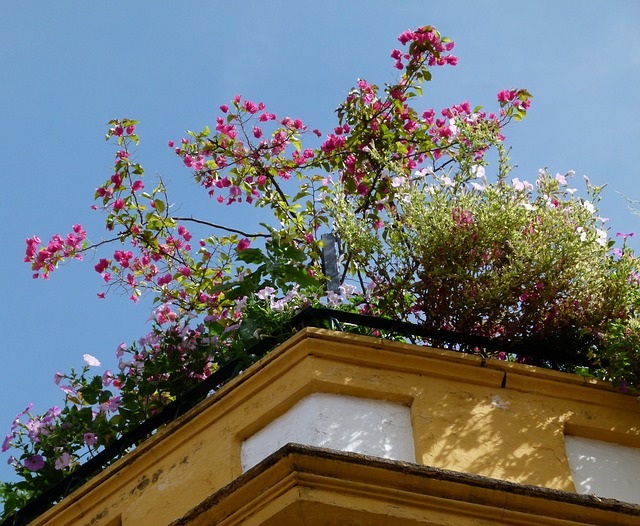
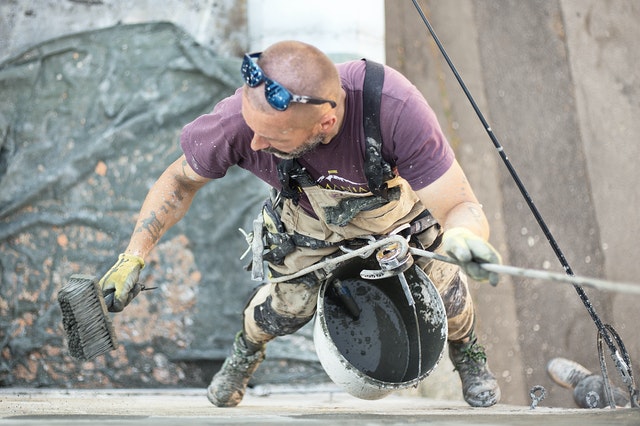
Recording Symmetry
To paint these symmetrical buildings you need to consider the final image that you wish to produce. If viewed “flat on” these are easy to record as you can line up the windows, eaves, doorways, and other features. The shadows will be cast regularly, allowing for a simple, angular composition to be developed. But this alone, especially if positioned in the center of your paper, can look rather flat and uninspiring. The answer may well be to walk along a little until you have a slightly angled view and to paint the house using some of your perspective skills.
Bow windows are frequently found on town houses. They are particularly attractive, but require close observation to be recorded convincingly. If you view them “flat on” you will need to ensure that they actually look curved. To do this, draw both the top and bottom lines of the window slightly curved. Next, draw the windowpane trim, starting in the immediate center. As you work outward, make sure that the spaces between the trim become progressively smaller. This will make them appear to be twisting slightly, make them appear to be twisting slightly, reinforcing the curvature suggested by the top and bottom lines.
This detached town house had a symmetrical from with angled bays. The warm brick was darkened in the shaded areas by painting a watery mixture of Burnt Sienna, Burnt Umber, and French Ultramarine onto a dry Burnt Sienna underwash. The same mixture was used for the ground shadows, which reinforced the shape of the bays and visually anchored the building to the Raw Sienna ground wash.
Terraces
Terraced buildings sometimes offer you a choice. You can take a step back and paint them “front on,” considering the differences between the individual houses, or look to your right or left and employ perspective.
These buildings come in many forms, ranging from long, elegant neoclassical rows to streets of industrial workers’ dwellings, with town houses and country cottages in between. The one feature that they have in common, however, is the fact that individual houses are physically joined to each other. This raises a few issues for the artist to bear in mind.
First, many terraces have been built up and extended over a period and different building materials have been used. This makes it fairly easy to punctuate the end of houses as they join the next one in the line.
Second, these types of houses will often have long, joined roofs. This provides an excellent opportunity to practice painting long, flowing lines along the length of the roof. To do this effectively, mix the appropriate colors for the materials used. For tile roofs Raw Sienna and Burnt Sienna usually makes convincing mixes.
Town Terrace
9½ × 12 in (24 × 30 cm)
This terraced house was painted on a cool, fresh spring morning. I chose this season as the building would be bathed in cool, blue/violet shadows and not obscured by the foliage from the foreground tree. Cobalt Blue and Winsor Violet (Dioxazine) were the key shadow colors used.
For slate roofs you might try mixing Cobalt Blue and Burnt Umber. Then, with a medium-size brush, pull the brush along the line of the roof using the tip of the brush. When you reach the end of the roof lift the brush and start again, below the previous stroke. Repeat this process as you work down the roof, leaving a long line of white paper every second or third brush stroke. The brush strokes will the paper as highlights.
Dormer windows are popular in terraced buildings and are worthy of painting studies in their own right. Look at the triangular angles that the sides create and the way in which they cast hard-edged angular shadows onto the main roof.
This terrace of rural cottages utilized much warmer shadow colors (French Ultramarine and Alizarin Crimson) to help give sharp definition to the porch and dormer windows.
Shadows from dormer windows are often sharply focused at the top and soften as they fall along the lines of the roof tiles. The angle of the tiles on a dormer window will often appear to be quite steep, too, and you may need to exaggerate the perspective to create the right effect. Look carefully at the sides of these windows as they are often of a different material from the tiles on the roof.



